Some freelancers make bank.
And they do it stress-free, with plenty of time to hang with the kids, perfect their tennis game or “Netflix and chill” until their heart’s content.
Sadly, other freelancers don’t.
They earn next to nothing and their clients are basically Satan — but whinier and more frustrating.
Hopefully you’re the former.
But if you’re not, you’re probably used to clients paying late, or asking — for the 12th time — for “just one more” revision.
You probably work 12-hour days, six days a week and can’t remember what a social life even looks like.
Didn’t you have friends before?
So, how do those smiling, stress-free, “money in the bank” freelancers do it?
They only work with high-value clients.
The type that pay well and on time, value your work and treat you, y’know, like a human being.
If you’ve yet to find these golden clients at the end of the rainbow, there’s a good chance you’re making one or more of these 7 disastrous mistakes.
Let’s change that now.
Time to kick things up a notch and create the life you’ve always dreamed of.
Mistake #1: You Haven’t Defined Your Ideal Client or Area Of Expertise
First things first: You have to be strategic.
Freelance writer and writing coach Jorden Roper says:
“When you do not know who you are marketing to, there’s no possible way you can create super tailored — and therefore effective — marketing messaging.”
Once you know who your ideal client is, you can position yourself to land them.
Start with a niche.
Six-figure freelancer and consultant Ilise Benun shares:
“You can’t be everything to everyone. Focus is essential to success and builds your competence and self confidence.”
Although there are exceptions, no one wants a generalist when they can have a specialist.
Here’s what I mean:
Imagine you own an ecommerce business. You need a writer to create long-form blog posts for your site to help drive traffic and secure new leads.
Four writers apply for the job and provide a link to their freelance writer websites. Here are the headlines on each of their sites:
- Writer 1: “Freelance writer for hire”
- Writer 2: “Flexible freelance writer available for copywriting, blog posts, white papers and email campaigns, etc. Whatever your industry, I can help”
- Writer 3: “Freelance writer specializing in long-form blog posts for businesses”
- Writer 4: “Freelance writer specializing in long-form blog posts for ecommerce businesses that want to drive traffic and secure new leads”
Which writer do you want to work with the most?
Obviously, Writer 4.
This is why narrow niches are so powerful.
As a niche freelancer, you’re able to position yourself as an expert to the clients you’re targeting — making you stand out as the best person for the job.
In his book “Talent is Overrated,” Geoff Colvin argues that niche expertise is essential to become a top performer and reach your highest potential.
“But Tom, I have so many interests and skills I’m passionate about! How could I possibly pick just one thing?!”
I feel ya.
But if you want to consistently attract high-profile clients, positioning yourself as a niche expert really helps.
Okay, but how exactly do you pick a niche?
First, think about what value you can bring to clients. What problems can you solve for people?
Jorden Roper suggests that your freelancing niche should be:
- Something you’re knowledgeable about or are willing to learn a lot about.
- Something that a specific target client will want and be willing to pay for.
- Something you’re interested in and/or enjoy.
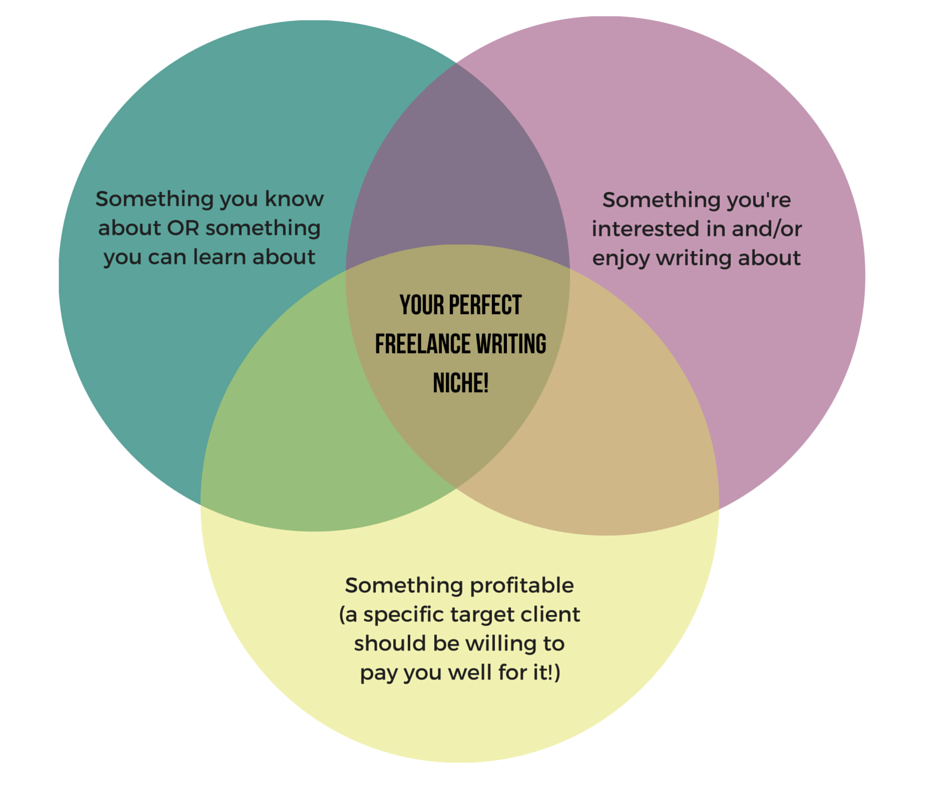
(Although Roper’s graphic is for freelance writing in particular, the principles apply to any type of freelancing — design, web development, etc.)
Once you’ve defined your niche, your target client and the problems you can solve for them, you can then focus on your marketing efforts.
Freelance copywriter Silkhe Fuenmayor says:
“Build a good and targeted portfolio to attract the clients you want to work with. You will never please everyone so be sure to pick your niche and create some great pieces (even if it’s for made up projects).”
Defining your target client and positioning yourself as an expert is the first — and perhaps the most vital — step you need to take when trying to attract high-value clients.
Mistake #2: You’re Selling Features Instead of Benefits
In the words of Seth Godin, it’s all about “Me, me, me. My favorite person: me.”
Let me be frank: Clients don’t care about you or what you do.
They want solutions to their problems.
Marketing expert Jay Abraham said, “Sell the benefit, not your company or the product. People buy results, not features.”
Apple understood this when they released the first iPod.
They took the feature — storage for 1GB of MP3s — and communicated the benefit it provided: “1,000 songs in your pocket.”
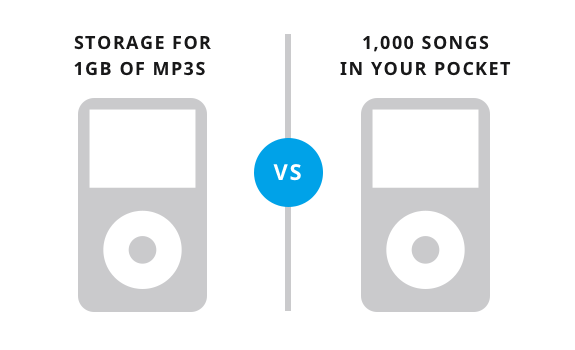
So take what you do (features) and communicate their value (benefits) to clients.
For instance, imagine you’re a web developer who optimizes websites. You might be tempted to tell the client about the ways in which you can improve their website.
But this isn’t a client’s real concern.
They care more about improving their conversion rates and customer experience — this is what you’re really selling.
Jason Fried, serial entrepreneur and founder of Basecamp, said:
“‘Here’s what our product can do’ and ‘Here’s what you can do with our product’ sound similar, but they are completely different approaches.”
Practice empathy: What does the client actually want?
You need to communicate to the client that you understand their problem and can solve it for them.
Mistake #3: You Have Poor Branding
We all make snap judgements.
It takes only one-tenth of a second to form a first impression about a person. And websites are no different.
It takes about 50 milliseconds (that’s 0.05 seconds) for users to form an opinion about your website that determines whether they like it or not, and whether they’ll stay or leave.
So, it better be good.
Google has since confirmed the 50 milliseconds number in their own research. In fact, according to their study some opinions even develop within 17 milliseconds.
Similar results were found in a study conducted by Stanford University credibility experts.
46.1 percent of consumers in the study assessed the credibility of sites based in part on the appeal of the overall visual design of a site, including layout, typography, font size and color schemes.
What does all this mean?
Peep Laja, conversion optimization expert and founder of CXL, sums it up:
“Great design gets people to trust you and to stick around. Poor design creates mistrust and makes people leave.”
So if your website looks like Warner Bro’s 1996 “The Lost World – Jurassic Park” movie website, it might be time to update it…
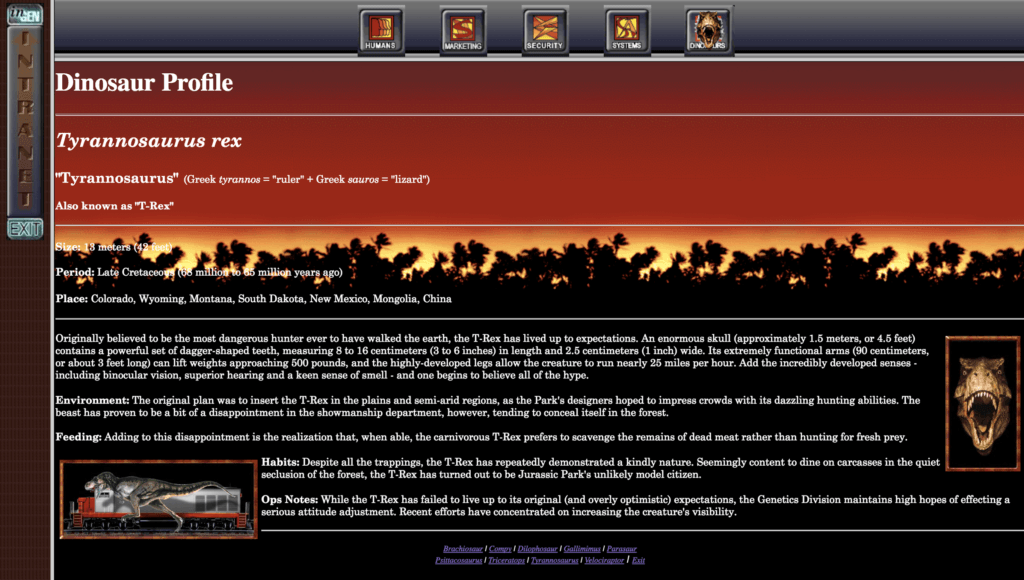
Thankfully, there’s loads of tools to help you do this.
Most website builders (like WordPress and Squarespace) come with pre-made themes that you can customize.
And trust me, a good WordPress theme can go a long way — even for someone like me, who has the web design skills of an inebriated monkey:
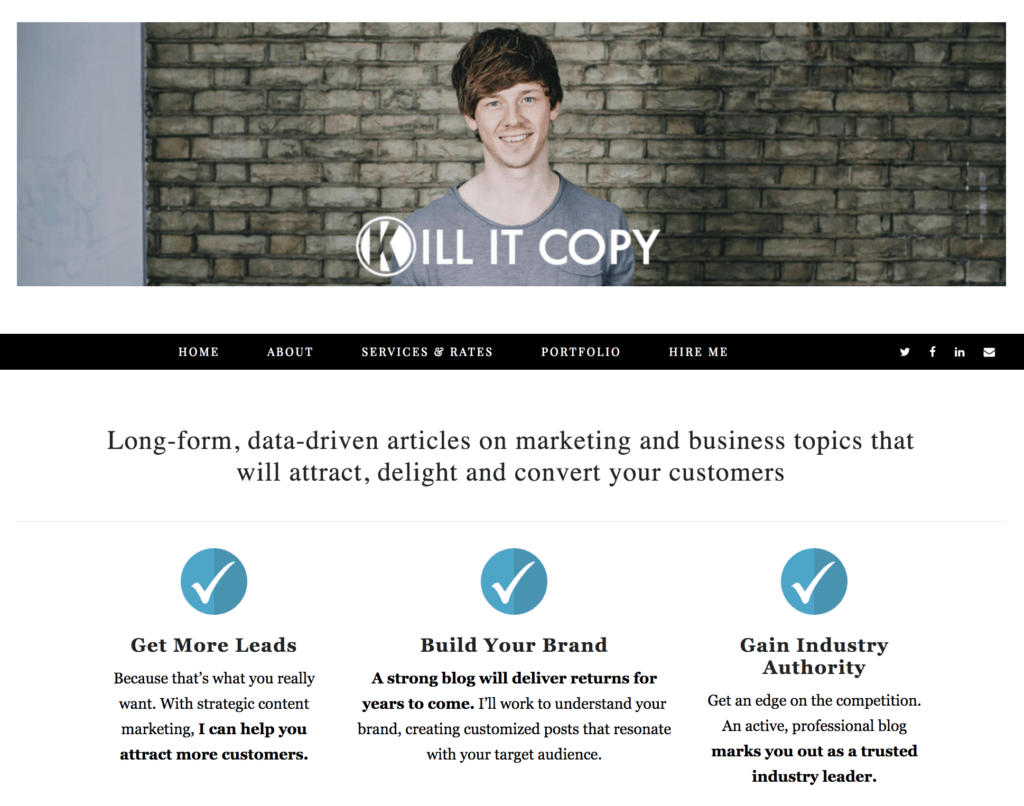
Simple things can make all the difference.
A profile picture left over from your days on Myspace isn’t ideal. Try using tools like PhotoFeeler to get feedback on your photos.
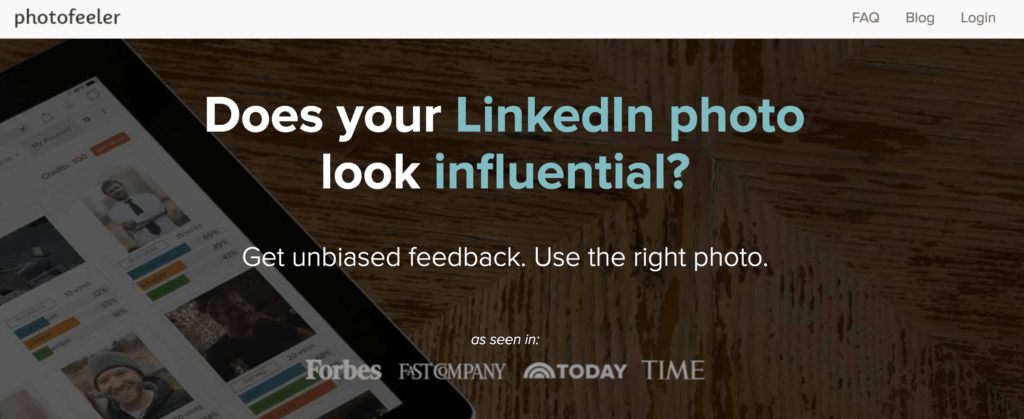
And a real domain name like “freelancedesigner.com” appears more professional than “freelancedesigner.wordpress.com.”
Think about the style and tone of your branding.
Who’s your target client? For example, CEOs of large companies will expect you to be more formal than solopreneur bloggers.
Ultimately, high-value clients want to hire a professional business person, not a hobbyist.
Which brings me to mistake number four …
Mistake #4: You Don’t Appear Trustworthy
Why is branding so important?
Because it’s how you elicit trust.
And no client will willingly hire a freelancer they don’t feel is trustworthy — would you?
Writer and speaker Simon Sinek said:
“[Trust] is the result of you making someone feel safe and them making you feel safe.”
According to a study by TNS, consumers are aware of the importance of Trust Seals on websites and have concerns when a website doesn’t have any.
Which is why many freelancers display the logos of the businesses they’ve worked with, like freelance writer Aaron Orendorff:
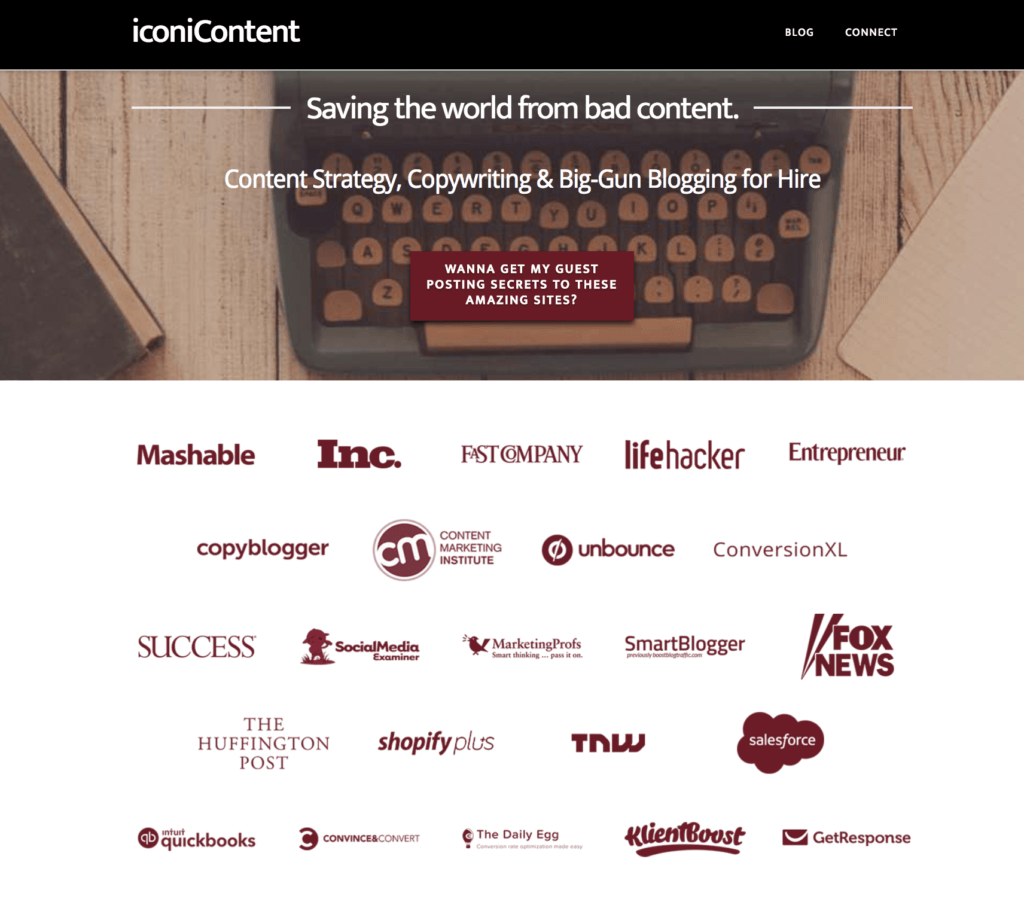
These logos instantly establish credibility and trust.
Other ways to prove your trustworthiness are through referrals and testimonials.
People are four times more likely to buy something when referred by a friend. And at 89 percent, customer testimonials have the highest effectiveness rating for content marketing.
Why?
Because if other people trust you, new clients are taking less of a risk.
Six-figure freelance graphic designer Preston Lee says:
“My best clients always came from word-of-mouth marketing. It always required much less convincing up-front and had a level of trust built-in.”
So ask for referrals and testimonials whenever you can. Display them on your website and include them in your pitches.
Lastly, the client needs to trust that you can effectively complete the work they need doing.
This is why your portfolio is so important. Your portfolio should include:
- Your best work — the cream of the crop.
- The work you’re most proud of.
- Work you completed for any high-profile clients.
- Work that is most relevant to your target client.
Before you secure work with a high-value client, you must first establish trust.
Mistake #5: You’re Pricing Yourself Poorly
You get what you pay for.
And high-value clients know this.
Mike Shreeve, freelancer extraordinaire and chief of The No Pants Project, recently wrote about his process for shortlisting writers for one of his blogs:
“Here’s the thing: if the price was LOW, I ditched the application straightaway … Good clients are afraid of cheap freelancers.”
Why?
Because low-cost freelancers earn their money through volume — they’re playing the quantity game.
They charge less and so have to take on many projects at once. Which means they can’t give any single project the time and attention it deserves.
But high-value clients are more concerned with quality.
Six-figure freelancer Preston Lee says:
“Learning to value your work properly leads to huge amounts of success as a freelancer because it allows you to charge more, turn down jobs you’ll end up hating, and ultimately be more satisfied with the work you do.”
There’s a case study in Robert Cialdini’s book “Influence” about a jeweler.
The jeweler managed to sell out of turquoise jewelry because it was accidentally priced at double its initial price.
The price was supposed to be cut because the turquoise jewelry wasn’t selling well. But instead, the inflated price made it irresistible to buyers.
After the price was raised, the context of turquoise jewelry had a “high-value” in the buyer’s minds.
Bottom-line: A high price generally denotes high-value, and a low price generally denotes low-value.
And that’s not all.
When you charge less and take on more work to make ends meet, you also suffer from “opportunity cost.”
You’ll miss out on opportunities to find and market yourself to new clients.
According to Upwork’s Freelancing in America: 2016 Survey, half of freelancers are raising their rates.
To attract high-value clients, join them and start charging what you’re worth.
Mistake #6: You’re Not Marketing Enough
I know a lot of freelancers who hate marketing.
They want to write, design, consult, edit … they want to work. Not pitch new clients, optimize their LinkedIn profile or ask clients for referrals.
But marketing is crucial to your success as a freelancer.
As a freelancer, you’re a business. And every business has to market itself somehow.
There are a number of ways you can do this:
- Write a guest post
- Upsell your current clients
- Optimize your website for search engines
- Network on social media
- Apply to job listings
- Cold pitch new clients
- Write a post for your blog
- Ask your current clients for referrals
Depending on your ideal client, industry, skills and preferences, some of these will work better for you than others.
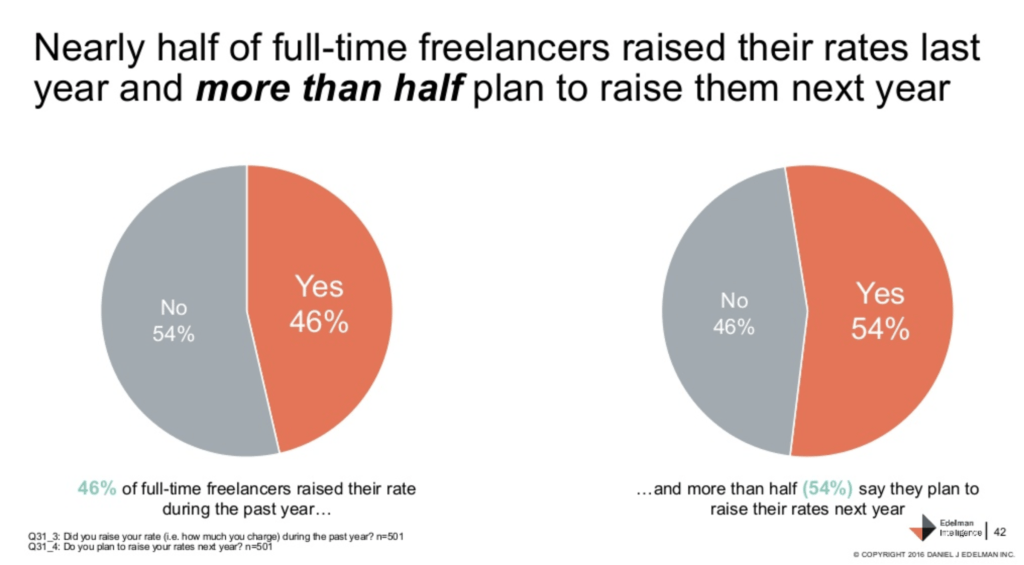
Six-figure freelancer Brandon Seymour says:
“I’ve had the most luck through blogging for popular sites and getting featured in print publications. One article in particular led to connections that brought in about $40,000 in revenue over the course of one year.”
However you do it, you should always be marketing yourself.
When you have plenty of work on your desk, it can be tempting to stop marketing your services and focus on serving your current clients.
But, if you want to find Mr. or Miss Right, you need to put yourself out there.
Mistake #7: You Haven’t Invested In Your Skills Enough
Bottom-line: You have to be able to do the work.
High-value clients want high-value freelancers.
This usually means having experience, talent or at least a large amount of resourcefulness to figure things out as you go.
It takes time to develop a high-value skillset.
But it doesn’t need to be expensive — on this crazy internet thing, you can learn pretty much anything for free.
For instance, freelancer Samar Owais shares her advice for writers:
“You don’t necessarily need to put thousands of dollars into getting the training you need. Start with a library of good copywriting books.”
According to Upwork’s Freelancing in America: 2016 Survey, over half of freelancers did some form of training during the last half of 2016.
And it pays off.
Nearly half of freelancers say clients seek their services for a specialized set of skills that are hard to find.
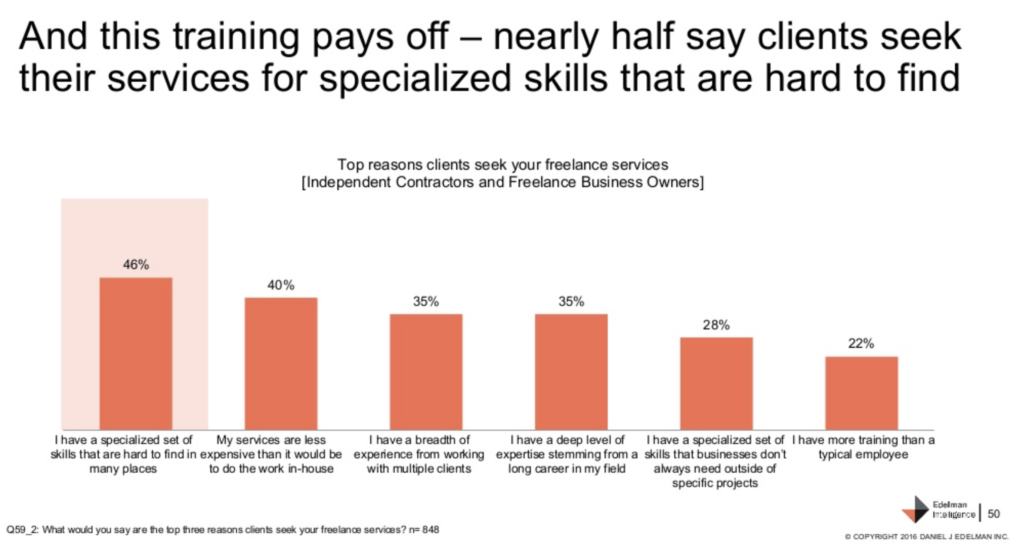
Developing your skills isn’t a one-and-done thing either.
“Successful people read. A lot,” says New York Times bestselling author Ryan Holiday.
So always be a student and continuously develop your skills. In doing so, you will be able to produce more and more value for clients.
Final Thoughts
Stop settling for stress-inducing, peanut-paying, satan-like clients.
There are plenty of high-value clients out there begging for high-quality freelancers to come and solve their problems.
And don’t worry if you’ve been making all 7 of these mistakes. Everyone starts somewhere.
Just keep moving forward.
Remember, to increase your chances of landing high-value clients, do these 7 things:
-
- Define your ideal client and area of expertise
- Sell benefits instead of features
- Brand yourself well
- Demonstrate your trustworthiness
- Don’t be afraid to charge what you’re really worth
- Continuously market your services
- Keep investing in your skills
And get started now.
The end of the rainbow isn’t as far away as you might think.










